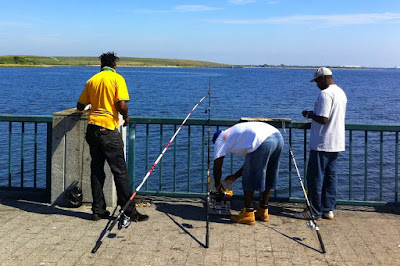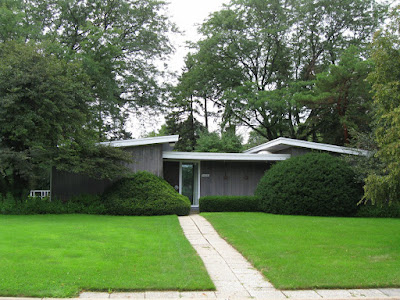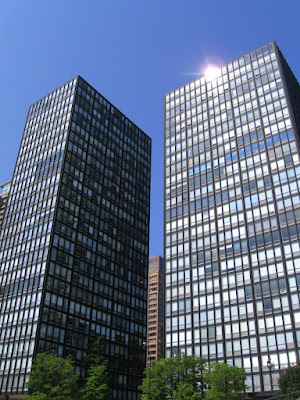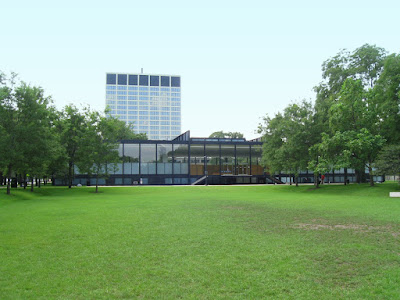Here's a run I did a month ago while on vacation in Chicago, the first big city I ever lived in. There's really too many places to run and too many things to photograph in the city, so I decided to focus on one notable part of the city I don't know very well: the south 30s and the campus of the Illinois Institute of Technology.
The campus was
master-planned by the great modernist
Ludwig Mies van der Rohe, who also led IIT's architecture department. I've been down there before, but this run was my first chance to spend a lot of time there on foot. I moved away from Chicago in 1997, and IIT wasn't loved (or visited) by many Chicagoans back then. The adjacent neighborhood was dominated by some of the country's worst, most dangerous housing projects, which stood as examples of just how horribly modernism could fail. And with the conspicuous exception of Mies' masterwork,
Crown Hall, the campus buildings didn't look, at first glance, all that different from
Stateway Gardens or the Robert Taylor Homes. (I wrote earlier about modernism and public housing
here.) Modernism in general was out of style: For most people, it evoked, at best, windblown office parks and cheap government buildings; among the architecture-and-design smart set, it was often mocked. I remember reading around that time Charles Jencks' postmodernist
takedown of the IIT campus, it which he pointed out that the heating plant is shaped like a church, while the church looked like a heating plant. (I thought that was pretty funny.) In the mid-1990s, IIT seriously considered packing up and moving to the suburbs. In his essay
Miestakes, architect Rem Koolhaas
writes:
According to statistics, a student and his or her parents decide, within five seconds of arrival, whether to apply to a given university or not.
With that test, Mies van der Rohe’s IIT Campus is in trouble.
The IIT campus is a masterpiece invisible to the contemporary eye. Mies’ work has become unnoticeable without explanation.
A lot has changed since 1997. Stateway and Robert Taylor have been demolished, and IIT decided to stay and pour money into its campus. Koolhaas designed a new campus center—controversially, because it connects to and obscures Mies' Commons Building. The new building incorporates the overhead El tracks, turning them into an architectural cloister-like feature of the campus rather than a divider. It actually looks like a bow tying the two sides of campus together. It's a loud, intentionally comic, glamor-mongering thing, but it works well with the Mies buildings. The contrast helps you see that the older classrooms and labs aren't bland and blank, but clean, uncluttered and sharp. That chapel doesn't look like a heating plant. It looks like a place perfectly suited to its purpose: getting you to sit up straight and think.
Modernism seems to me to be aging well—especially now that we know that it's just one historical style, not the only thing we're going to get from now on. I wasn't the only person roaming the campus with a camera. Which makes me wonder: Are we ever going to regret they way they ripped the guts out of Walter Netsch's
UIC?
This run was just over 11 miles. It started on the lakefront, and also passed by Mies' two Lake Shore Drive apartment complexes. A shout-out is due to the excellent
Galinsky.com, an online guide to modern and post-modern landmarks. I've linked to some of its pages in the captions below.
 |
| I was surprised to find the door unlocked... |
|
| From Chicago run |













































































